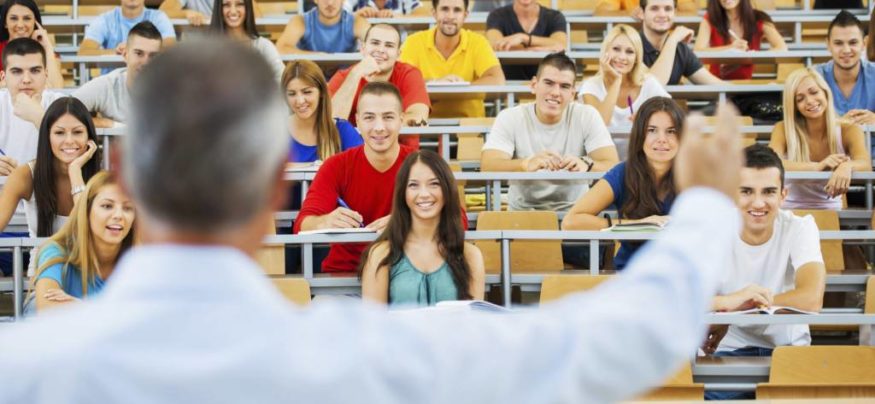In this News Insight, ReadWrite explores whether VR could be the next big shift in educational technology. Wondering how to fund your school’s VR pilot? Read our guide to ed tech funding. —Samsung Insights editorial team
Just a few years ago, virtual reality seemed to be a sci-fi concept for most people. Currently, virtual reality is playing an increasing role in reshaping such industries as medicine and real estate and educators started using VR in academic settings. A lot of people now believe that this technology is the future of education and that students will benefit from VR-enabled textbooks and virtual classrooms.
This article explores the impact of virtual reality on students and educators. You will learn about typical advantages of using virtual reality in the classroom.
VR Can Stop Classroom Smartphone Distraction
According to the study, results of which were published in the Journal of Medical Education, students spent a fifth of their time in the classroom using their mobile devices for the activities not relevant to their school work.
The research findings showed that the students checked their smartphones 11.43 times on average during their lessons. If these smartphones were used for VR technology, the problem could potentially be solved. Students would not be able to waste their time on smartphones because they would use their devices to engage with VR software.
Eliminates Language Barriers
Language differences can be challenging in today’s multicultural societies. If students want to study in a foreign country, they need to achieve fluency in a foreign language to be able to understand the material if they are taught in another language. With virtual reality, language translation can be built into the software and there will be no language barrier that can prevent students from achieving their educational goals. VR visualizations can be experienced in any language.
Outstanding Visualizations
VR video simulations allow students to explore different realities and have an alternative learning experience that is impossible in the traditional classroom. Wearing VR headset, students can experience high-quality educational visualizations that have a positive impact on the whole learning process. VR can help students easily understand complex concepts, theories, and subjects. they are able to digest and retain complex information at a much higher rate.
An average person can remember only 20% of information that they hear and 30% of information if they see it. But if they get this information through personal experience, they remember up to 90% of it. VR technology creates an immersive experience that helps students learn effectively.
Research has proven that immersion of students in the virtual world enables them to learn better. Such learning activities don’t feel like work and students enjoy the learning process that increases their motivation.
Social Integration of Students
Students achieve better results in a positive learning environment when they can connect with their peers. Virtual reality can enhance social integration of students with different learning needs and styles.
Students who commonly struggled to become a part of a group were accepted by their peers because they had strong technology skills. These are the findings of Dr. Connor Galvin who evaluated virtual reality learning program that involved 20 schools. This technology can ensure positive outcomes for children experiencing problems at home, with learning difficulties or from ethnical minorities.
Virtual reality changes the way we learn, teach, and communicate. The learners are engaged during the lessons because there are no outside distractions as this technology is immersive in nature, inspires creative learning, and promotes curiosity.
Now we are witnessing as more and more progressive schools all around the world start using the VR technology within their classrooms and curriculum. With VR, teachers can teach different subjects in new and exciting ways, making learning process fun.
Virtual reality has the potential to transform education. It offers endless possibilities for higher education institutions as well. It can be a powerful tool in supporting STEM education.
VR is used in architectural design and allows students to view their own designs in real time. It is also a great learning tool for medical students who can use it to simulate real-time surgeries. Universities can use this technology to create virtual tours for recruiting students.
The use of virtual reality in higher education is likely to increase over the next few years. Virtual reality is unlikely to replace old-school face-to-face teaching methods, but this technology will continue to be used to enhance learning experiences for students.
The post Benefits Of Using Virtual Reality In The Classroom appeared first on ReadWrite.
This article was written by iblogs from ReadWrite and was legally licensed through the NewsCred publisher network. Please direct all licensing questions to legal@newscred.com.
Looking to create immersive 360 video content for VR? Get our definitive guide to 360 video production.
![]()







